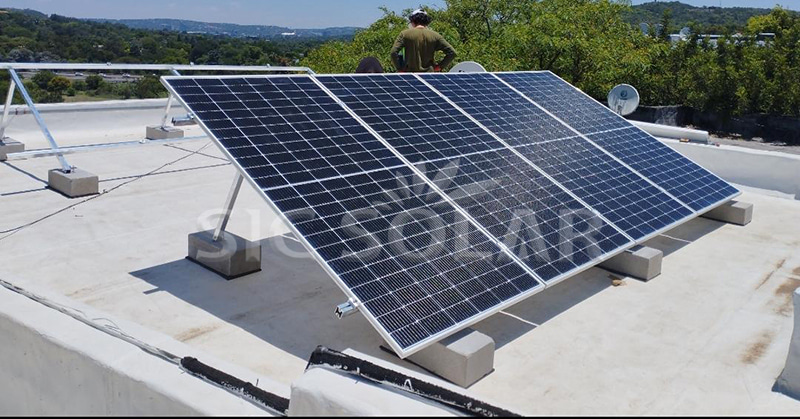Flat rubber roofs are a common feature in commercial buildings and modern homes. While their sleek, low-maintenance surface offers practical benefits, many property owners wonder if these roofs are suitable for solar installations. The good news is yes—solar panels can absolutely be installed on flat rubber roofs, and with the right mounting system, the setup can be just as effective and secure as pitched roof installations.

What Is a Rubber Roof?
A rubber roof, often referred to as EPDM (ethylene propylene diene monomer) roofing, is a durable and weather-resistant membrane used on flat and low-slope roofs. EPDM is popular for its flexibility, UV resistance, and relatively simple installation. Unlike traditional roofing materials, rubber roofs offer a seamless, water-resistant surface that can last for decades when properly maintained.
Challenges and Solutions for Solar on Rubber Roofs
Installing solar panels on a flat rubber roof does come with some unique challenges, primarily related to waterproofing and panel orientation.
- Waterproofing Concerns: Drilling into a rubber membrane is typically avoided, as it can compromise the waterproof seal.
- Panel Angle: Flat roofs do not offer a natural tilt, so racking systems must be used to elevate the panels and position them at the correct angle for optimal sunlight exposure.
- Wind Load: Without a pitched roof to shield them, panels on flat roofs can be more exposed to wind forces, requiring a secure and well-engineered racking system.
To address these issues, solar installers use ballasted mounting systems, which rely on weight—often concrete blocks—instead of penetrative anchors to hold the panels in place. These systems sit on top of the roof and are designed to evenly distribute the load without damaging the membrane.
The Role of Mounting Systems
A high-quality mounting system is essential for ensuring the long-term success of a solar installation on a rubber roof. It must support the weight of the panels, resist environmental stress, and allow for proper airflow and drainage.
SIC Solar, a company known for manufacturing and supplying photovoltaic mounting brackets, offers several flat roof mounting options that are well-suited for rubber membrane applications. Their ballasted racking systems are engineered to avoid roof penetrations and feature tilt angles optimized for solar efficiency. Made from corrosion-resistant aluminum and stainless steel, SIC Solar’s components are designed to last in even the harshest rooftop conditions.
In addition to standard ballast solutions, SIC Solar provides adjustable tilt frames and modular designs, making it easier for installers to work around rooftop obstacles like vents and HVAC units. Their mounting systems also integrate neatly with wire management accessories, helping to keep cables organized and off the roofing membrane.
Flat rubber roofs, when paired with the right mounting technology, can provide an ideal platform for solar energy production. With thoughtful design and high-quality racking solutions, property owners can turn their flat rooftops into clean energy assets without compromising roof integrity.